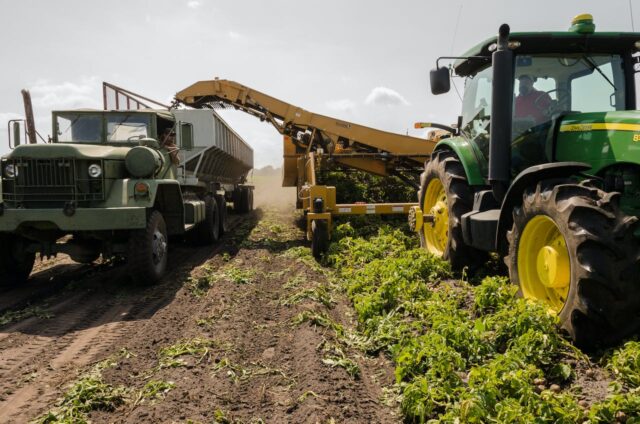Texas, often referred to as the Lone Star State is not only known for its vast landscapes and vibrant cities but also for its thriving industries and robust agriculture. The interaction between industries and agriculture on the state’s fertile land has significantly shaped its economy. From the rich, fertile lands of South Texas to the bustling cattle industry of the North, you’re about to uncover the economic significance of Texas agriculture and industries.
South Texas
In South Texas, you’ll find a wealth of agricultural innovation vital to the region’s economic success. This area is a hub for advanced cultivation practices, focusing on sustainability and efficiency. Research centers in Corpus Christi, Weslaco, and Uvalde lead the way, tackling issues ranging from Texas food crop shortages and precision agriculture to water use and crop diversification.
They’re not just innovating. They’re impacting Texas agriculture in a big way, bolstering economic growth. The rich lands here support several farms with diverse crops like cotton and orchards, contributing to the economic impact in measurable ways. Visit property listing websites like Texas Acres to check out farm and ranch land in the Lone Star State.
The wildlife habitat is another crucial aspect, supporting species like the white-tailed deer and the Rio Grande wild turkey. All these factors make South Texas a shining beacon of agricultural innovation, a testament to human ingenuity, and a vital contributor to other states of the economy.
West Texas
West Texas, one of the nation’s driest regions, necessitates innovative solutions for sustainability. Water is a precious commodity, fueling agriculture and industries; thus, its management is essential to economic survival. Drought-resistant crops like sorghum dominate the fields, showcasing the region’s adaptability.
Extensive irrigation systems draw from the Rio Grande Valley and Pecos River, reflecting the importance of water sources. Industries are also adapting and prioritizing water-efficient processes. It’s clear that West Texas’ economic health hinges on the balance between water use and sustainability, a testament to its resilience and resourcefulness.
North Texas
Strong livestock and crop production are primarily responsible for the North Texas region’s economic vitality. The economic significance of industries and agriculture here is palpable, carving a visible imprint on Texas land.
Beef cattle raising is a major industry, contributing significantly to the Texas agriculture economy. Panhandle-Plains region’s contribution to the state’s economy is substantial, with management practices being developed for the major livestock and crop production industries.
North Texas’ combination of fertile land and innovative farming techniques ensures it remains a cornerstone of the state’s agricultural output.
East Texas
As you venture into East Texas, you’ll encounter many urban development challenges, significantly impacting the economic significance of industries and agriculture on Texas land.
Urban areas are expanding, often infringing on rural lands, threatening the natural habitat and the agricultural sector. The delicate balance between urbanization and preserving agricultural lands is a constant struggle.
While urban growth brings economic prosperity, it also threatens rural areas, which hold immense significance in contributing to Texas’s agricultural industry. Adapting to these challenges requires innovative approaches and sustainable development strategies.
Therefore, it’s imperative to integrate urban planning with rural development to ensure the economic sustainability of East Texas, highlighting the importance of agriculture while accommodating urban growth.
Texas agriculture support network
In your journey through Texas’s diverse landscapes, you’ll find the Texas agriculture support network playing a vital role in maintaining the economic significance of industries and agriculture on Texas land. These support networks ensure the vitality of land-based industries and agriculture.
It tailors studies and outreach programs to local landowners, amplifying the economic significance of agricultural commodities and their contributions. These working lands, a patchwork of farms, ranches, and forests, provide ecological, economic, and intrinsic benefits to Texas communities.
The network’s research and extension centers across the state address region-specific issues, fostering innovations for sustainability.
Private land ownership impacts
Texas farmers and ranchers, who are critical to the economic significance of industries and agriculture, benefit greatly from private land ownership. This impact isn’t just in crop yield but also in the diversity of Texas land. From cotton fields to orchards, the variety of produce is vast and economically significant.
The Texas Department of Agriculture reports that private land ownership allows for innovative farming techniques, enhancing productivity and profitability. Moreover, privately owned land provides opportunities for sustainable practices, bolstering the economy and the environment.
Therefore, private land ownership’s impact extends beyond individual farmers to the broader Texas economy.
Economic benefits of Texas farms
Working lands, brimming with industries and agriculture, bring numerous economic benefits. They’re not just providers of food and raw materials; they also generate jobs, both directly and indirectly, contributing to the state’s economy.
They attract related industries, amplifying the economic impact. Plus, they offer environmental benefits like carbon sequestration, which have financial value.
Cash receipts
The cash receipts generated from agriculture have a substantial economic impact, bolstering the state’s economy.
Small and large farms
Texas has a mix of small and large farms, contributing to crop diversification and economic stability. Small farms often focus on specialty crops and niche markets, while large farms are crucial in supplying staple crops and livestock to a broader consumer base.
Average farm size
The state boasts an average farm size that surpasses the national average. This larger average farm size allows Texas farmers to implement efficient farming practices and benefit from economies of scale.
Industries and agriculture synergy
The synergy between industries and agriculture on Texas land is evident. The machinery used in farming and ranching is produced in the state’s industries. Meat packing plants and other food processing facilities ensure that Texas food products reach consumers efficiently.
This collaboration between industries and agriculture not only fuels the state’s economy but also contributes to the broader food supply chain across the nation.
Last words
The economic significance of industries and agriculture on Texas land cannot be overstated. Texas has consistently played a vital role in shaping the nation’s agricultural production. The state’s ability to adapt to changing times, embrace advanced cultivation strategies, and foster a thriving agricultural sector has made it a beacon in the United States Department of Agriculture.













